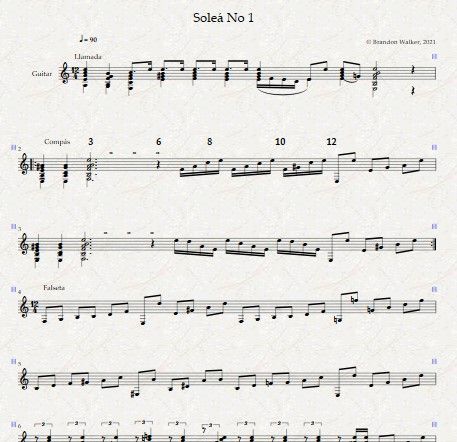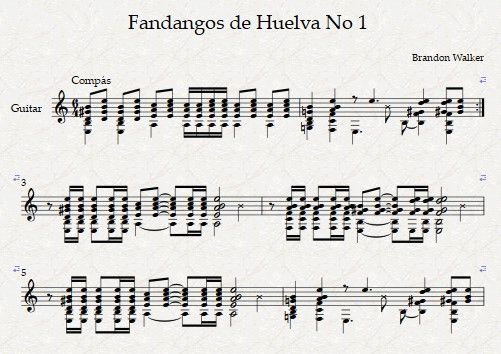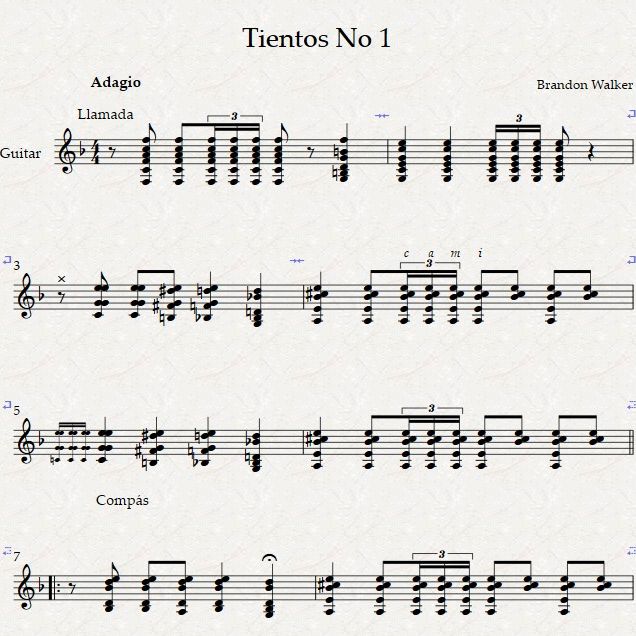
Suite Flamenca Continua

Soleá - Harmonic tension on 3rd beat, resolves on 9th

Overture: Tarantas
I. Soleá - Alegrías
II. Seguirillas – Tientos – Tangos
III. Fandangos de Huelva
IV. Bulerías
Concept
In my study of flamenco, I learned that although each ‘branch’ (palo) represents a unique form—with its own compás or rhythmic pattern, and a number of traditional features which identify each palo—many of the forms are thought of as existing on a continuum. In essence, while the Tientos has its unique characteristics, it is actually a slower form of the Tangos, which, in turn, is a slower form of the Rumba. When guitarist, dancer, singer and percussionist play in ensemble, it is common for a Tangos to climax with a short Rumba. As such, the Rumba is said to be the macho of the Tangos. The llamada is the part of each compás that announces the intent of the music to everyone on and off the stage.
The concept of Suite Flamenca Continua emerged as a means of understanding the musical gestures I was learning by knitting them together in my own way, using a selection of the countless extant flamenco forms, whilst acknowledging the implicit continua that flamenco palos occupy when considered in the context of a performance.
The overarching structure bears reference to my fondness for Classical music, with an overture preceding four ‘movements’ which are loosely based around the four movements of a Classical symphony. The first employs a pair of relatively lively palos, the second begins with the dark Seguirillas, and builds in tempo through the Tientos and Tangos. The third, in four-four, is dance-oriented, with solo guitar in place of the traditional cante sections, and the fourth is the fiery Bulerías, with its climactic sequence of piú mosso sections serving as a finale.
Fandangos de Huelva - the only fandangos that is not played in free time.


